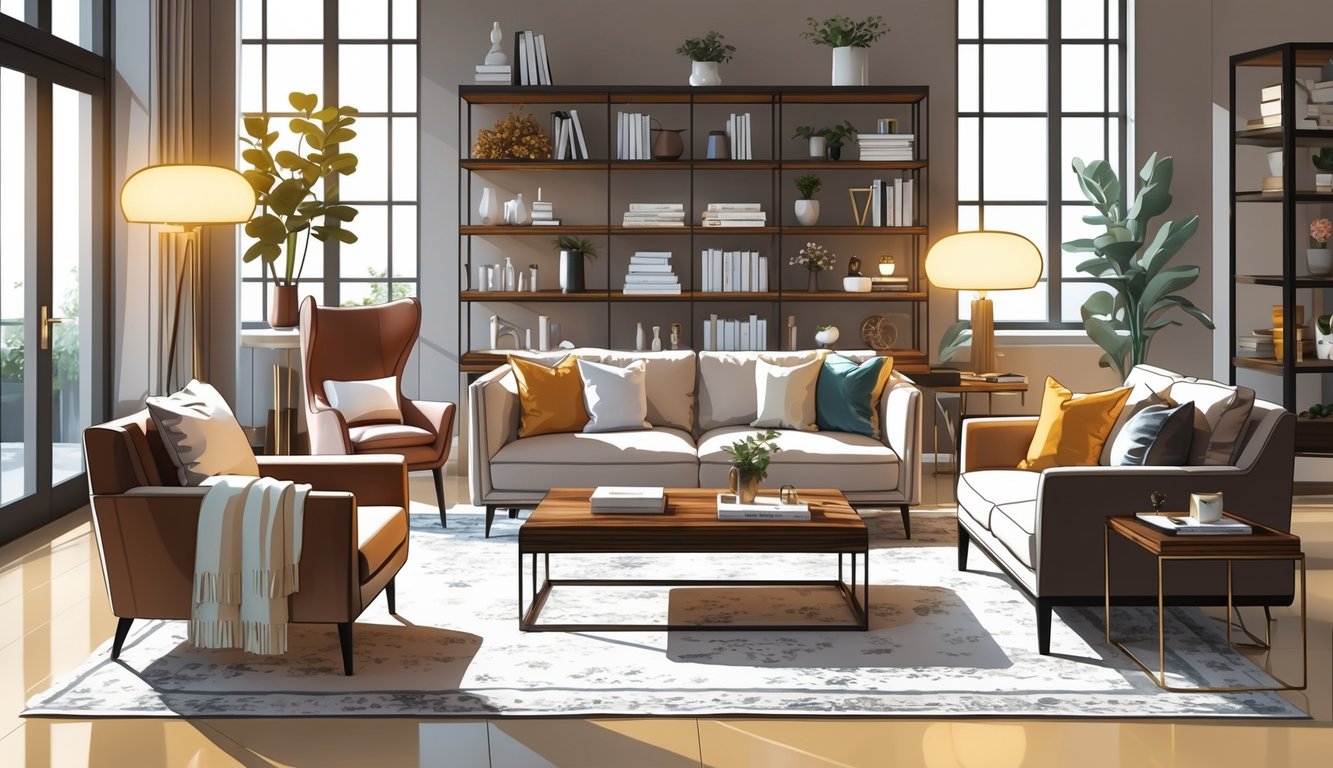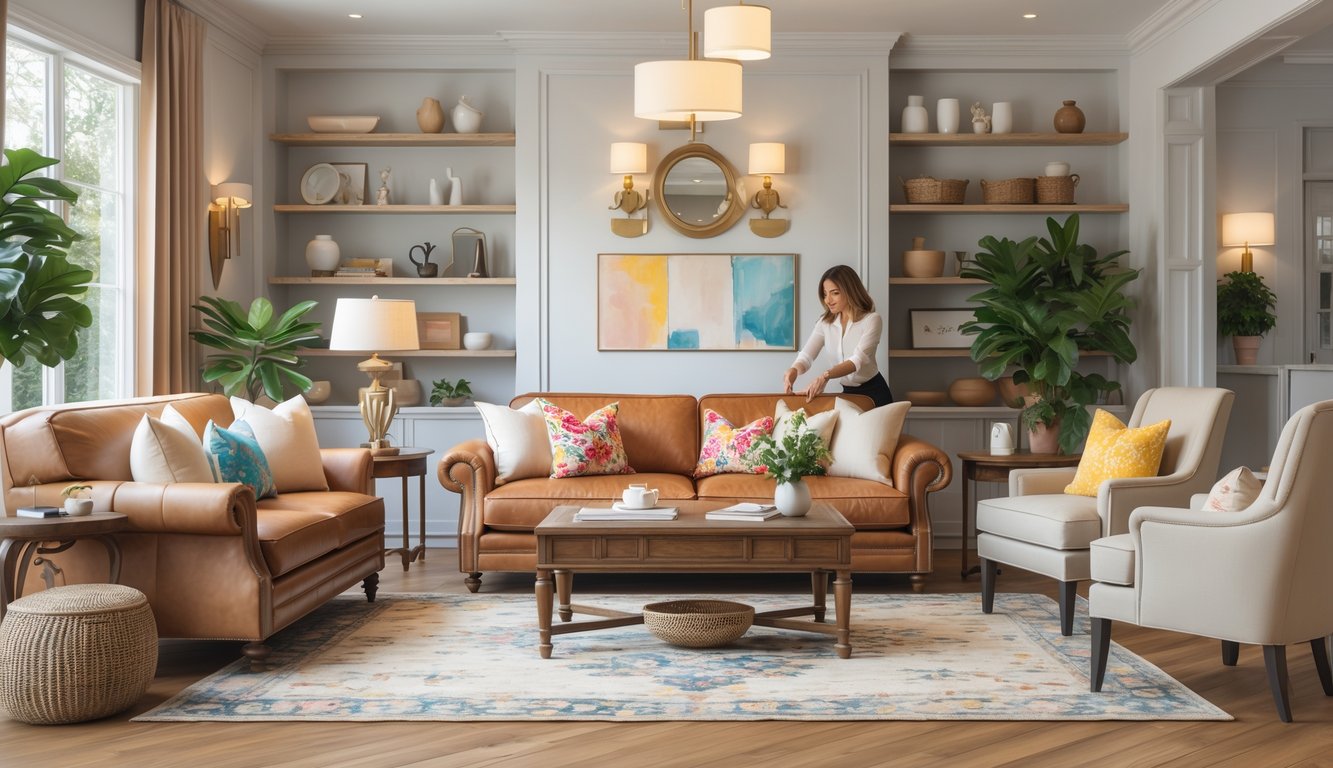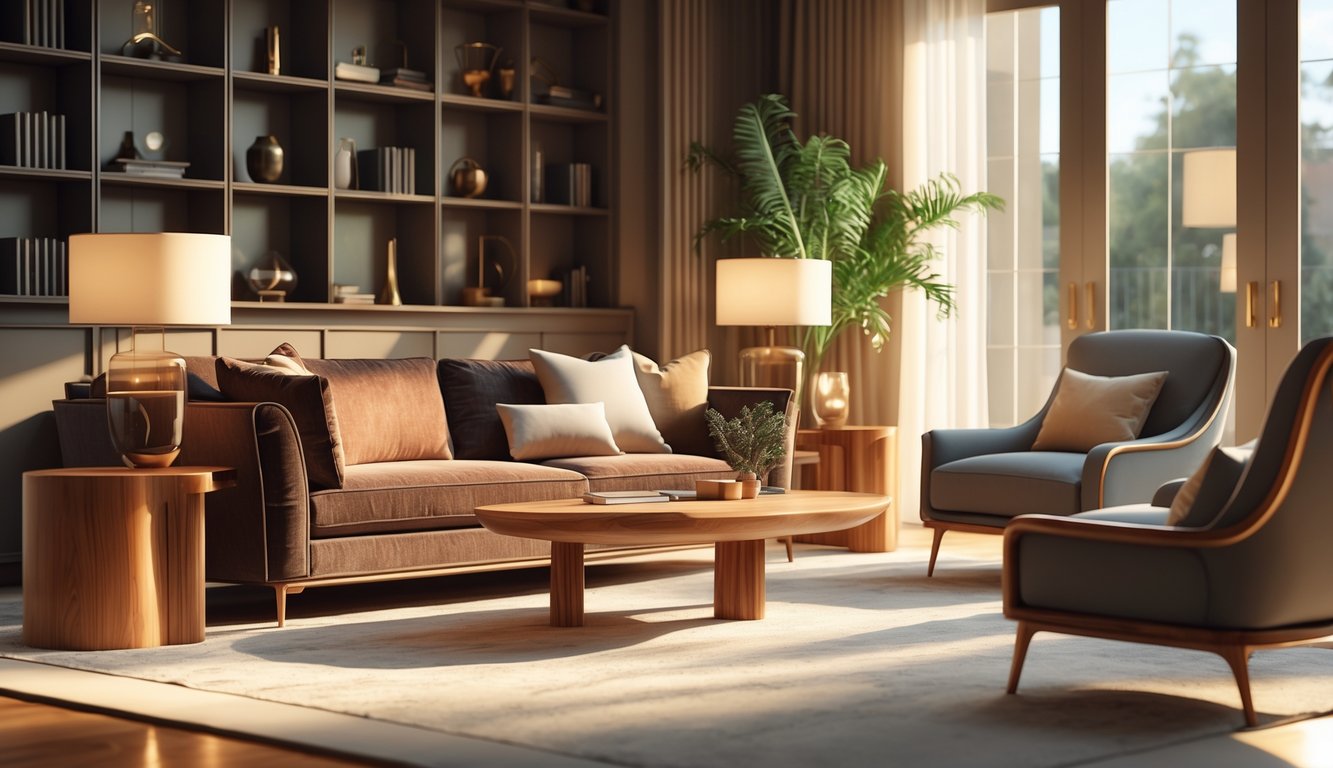
Opting for Storage Ottomans
Let’s talk storage ottomans. I ignored them forever, thought they’d look frumpy. Meanwhile, my apartment became a dumping ground for blankets, tech, random kid stuff I pretended wasn’t mine. Real Homes says hidden storage boosts resale and sanity—16% of designers call lack of storage a top regret. I could’ve had a plush ottoman (with storage!) instead of a glass coffee table that’s always covered in junk. Function, seating, a lid—sounds basic, but new ones (West Elm’s Harris, Article’s Soma) actually look good.
Someone once called a storage ottoman an adult’s toy chest. Weird, but also, yeah. Better than tripping over baskets every morning, still refusing to admit I need storage.
Incorporating Vintage Pieces
Ever scroll through design feeds and wonder where all the soul went? I skipped vintage stuff because I was scared it wouldn’t “match.” Past me forgot: real patina beats matching anything. Designers at Fabdivine say vintage is what brings mood. Even a beat-up brass lamp starts conversations. I once skipped a $60 mid-century credenza at a charity sale—it’d be $900 now. I don’t think anyone actually prefers new mass-market stuff. Every time I see those cookie-cutter rooms in magazines, it’s like—where’s the story? One battered Thonet chair does more than seven overpriced knockoffs.
Missing Out on Gallery Wall Ready Pieces
And then there’s the blank wall above the sofa. Chaos. I always hesitated, worried about holes in the drywall, so I skipped collecting art. Stylists say this is a huge regret—once you need to fill a space, you can’t just buy taste. Some survey (wish I remembered which) put “blank walls” in the top five post-reno regrets, especially when art got axed from the budget. I let a cool lithograph go for a brunch tab once. Still thinking about it. The wall’s still empty.
If you don’t start grabbing or framing art now, your gallery wall will always look half-baked. Even a pile of cheap frames is better than nothing. But I always prioritized lights or plants. Why? No clue. Art is the only thing people actually ask about.
Balancing Personal Preferences With Timeless Decor

Here’s what’s wild: my living room looked like a Pinterest board for maybe three months, then I was just bored. Neutral sofa, walnut sideboard—safe, but safe is also kind of dull. Every stylist I know says you’ll never regret a good staple, but nobody admits the micro-regret of skipping something wild, like a patterned chair or, I dunno, showing actual personality.
Personal Style Versus Practicality
Everyone repeats this: “80% investment furniture, 20% trends.” Like it’s gospel. But being practical means killing off some quirks. I skipped a bold green credenza once (estate expert said it’d hold value), and now it haunts me. Industry data says 62% of people ditch trend pieces within three years. Timeless stuff—real oak, mid-century lines, leather—sticks around, but too much beige and “versatile” feels like living in a waiting room. My designer once laughed at my endless gray sectional debate, muttering about “death by micro-suede.” There’s no formula, really. It’s just you, your regrets, and your ability to ignore both.
Bold Choices: When to Take the Leap
So, when do you get weird? Buying a sculptural lamp or a jewel-tone chair shouldn’t require spreadsheets. Best rooms I’ve seen (and homes that sell fast, apparently) always have something gutsy and a little irrational. Sometimes that bold piece feels awkward for weeks, especially if family hates it. But nobody I’ve worked with regretted a wild credenza or a custom rug that broke the color rules. Real estate agents say homes with unique focal points sell 7% faster. The trick is remembering you can always take stuff down—removable wallpaper, statement art, lighting you can swap before the next trend. Maybe the fear isn’t about commitment, it’s just “will this look dumb on Instagram?”
Quality Materials: A Non-Negotiable

Honestly, what still drives me nuts is how skipping quality materials just haunts you. The regret sticks around—wobbly legs, flattened sofa arms, peeling veneer, weird chemical smells from cheap finishes. Nobody talks about it, but the shortcuts show up fast. I mean, you can see it in daylight. And once you notice, you can’t unsee it.
How to Identify Durable Fabrics
Alright, let’s just say it: I used to fall for those “performance” labels—ended up with a couch that looked like a sad sweater after one party. Lesson learned. Linen blends? Eh, not bad, but pure linen actually handles kids and pets way better (wrinkles, though, can’t lie). Wool—especially if it’s tightly woven—just shrugs off stains and keeps looking decent for years. I mean, who’s ever regretted splurging on Harris Tweed? Not anyone I know. I watched a designer once fold velvet samples over and over to see which ones bounced back—if it stays crushed, just walk away.
Here’s a weird trick: scratch the back of the fabric bolt with your nail. If it sheds or the color bleeds, forget about it. Rub counts? Confusing, right? But if you see “15,000 double rubs” or more, that’s actually commercial grade—finally, something in furniture that isn’t just marketing. And cushions—nobody talks about foam density, but they should. Cheap, low-density foam turns into a pancake in a year. High-resilience foam? Holds its shape, keeps the seat looking normal. I’ve read a dozen guides that say the same, but people still ignore it.
Labels lie. I always ask for swatches, do a wine spill test at home—Crypton fabric? Actually survives chaos. Knockoff “performance” stuff? Might as well throw it in the wash and watch it die. Leather’s another trap. “Genuine leather” usually means leftovers mashed together. Only full-grain stays soft and doesn’t crack when your heat’s blasting in January.